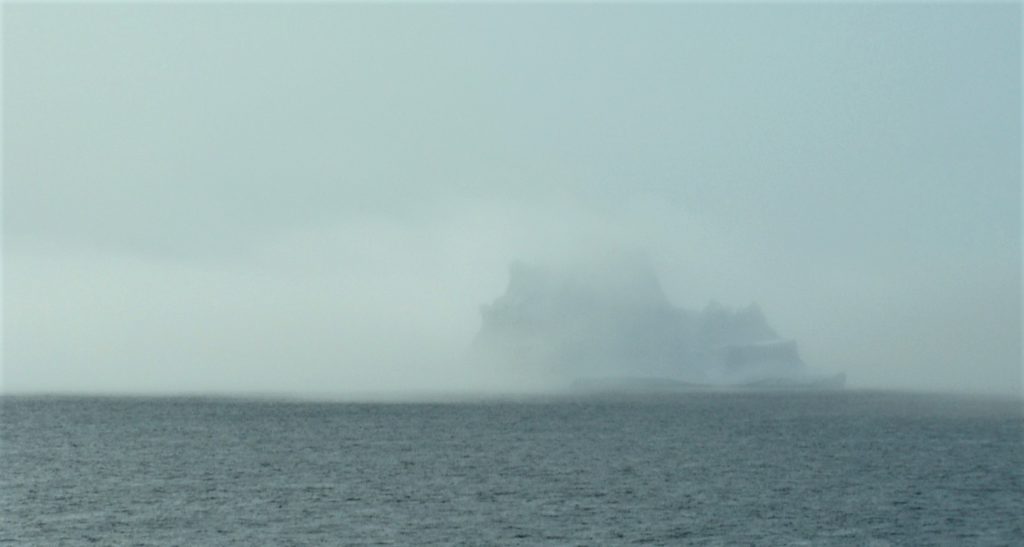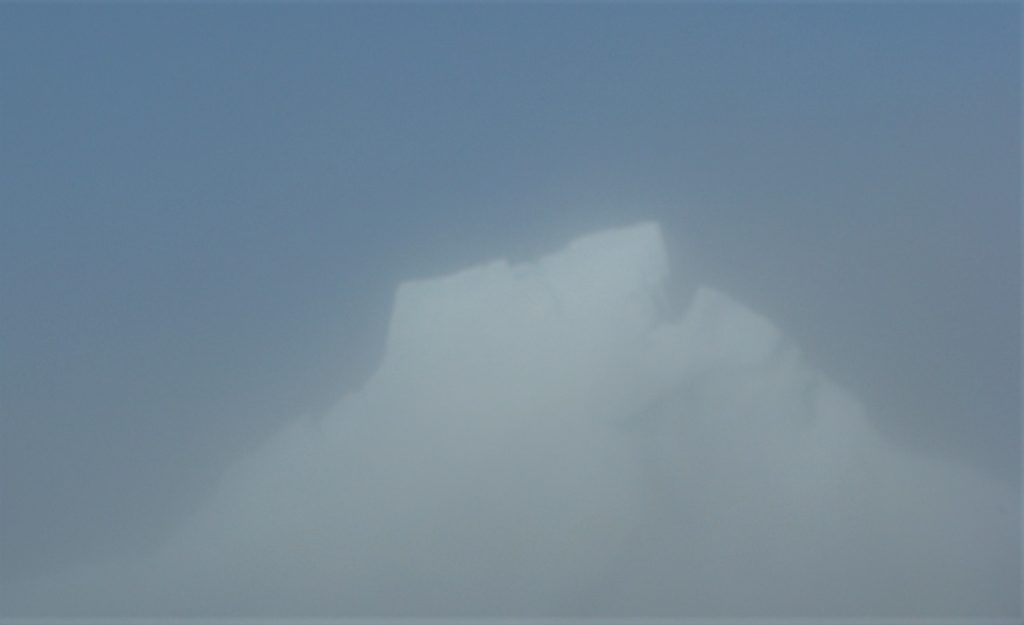Early July, around the time of my birthday, I celebrated one full year at sea: since 2012 I have been a seabird observer on research vessels plying the northwest Atlantic from the Scotian Shelf to Lancaster Sound. During some of this time the vessels have worked up the coast of Labrador and, through Davis Strait, into the Baffin Sea and Arctic Ocean. So I’ve been through “iceberg alley” and beyond. And, although I’ve seen hundreds of them, VIEWING ICEBERGS NEVER GETS OLD.
But this one was special. First, because of its sheer size. It loomed large even at a distance of 15 NM (nautical miles) to the point that it even seemed to be making its own weather: the berg was chilling the water immediately surrounding it and this was initiating a dense fog which the winds were blowing over it and several miles downwind – looking like the snow plumes you see in pictures blowing over the top of Mt. Everest.
The other thing that made this one special was that the captain, Alain Galiepy, in response to my somewhat flippant request (“Let’s steam over and get a good look at it”) said, “sure”. Now this in itself was significant. Many times during my accumulated year at sea I’ve pointed out interesting things: whales, concentrations of seabirds, icebergs, the Queen Elizabeth II, and have suggested going over to get a “closer look”. And EVERY time, the response has been the same: a chuckle and a course maintained. [Ok….being turned down for some things I can sort of understand….like the time I found a “ports book” for Northwest Africa on the bridge of the Hudson and suggested that we go take a look at the port of Dakar, capital city of Senegal….maybe a bit out of the way. But these other phenomena!?)
I couldn’t believe it when the captain had the helmsman change course toward this monster. As we got closer, the fog that it was generating became thicker to the point that you couldn’t see it any longer. Thank goodness for radar! (I just can’t imagine the terror that the combination of fog and icebergs must have engendered in pre-radar mariners. One time, along Iceberg Alley, we were enshrouded by a thick fog that reduced visibility to <50 m. and stayed with us for hours – didn’t see many seabirds I must say. The radar screen showed a total of 62 icebergs within a 10 NM radius! And this didn’t count the numerous smaller “growlers” and “bergy bits”. Nonplussed, we were able to steam right along.)
For awhile I thought that, ironically, this berg, unique because it was the response to a request that had never resulted in any action before, would be unviewable. But then, as we were beside it, the top became visible and I grabbed my camera. And at this point there was another irony: my memory card was full and I couldn’t get more than one shot!
The captain had retrieved his sextant from his cabin and “shot” the berg finding that its elevation was 88 meters – almost the height of a football field’s length! He went on to say that the depth of the berg under the water (the “keel”) would vary between 4-6 times the height of the part above (the “sail”) and that this would depend on the volume of the sail – pushing the keel down. In this case, the sail was massive, not narrow and/or conical, a solid block. So a conservative estimate of 5 times the height would suggest that this berg extended at least 440 meters below the surface. The berg was perched on a slope. It had drifted across an ocean floor that was over 700 m. deep but was shelving up to 200 m. Somewhere along this slope the berg had hit the bottom and grounded itself. It was stuck fast and the current and/or wind wouldn’t move it until it had melted considerably – several years from now.


